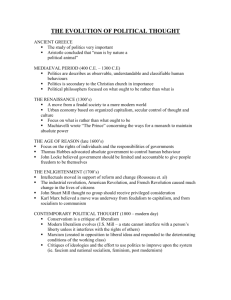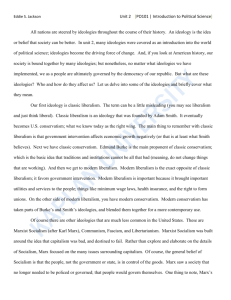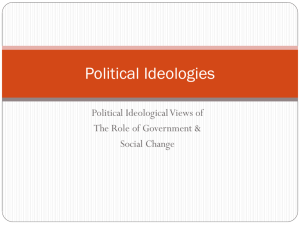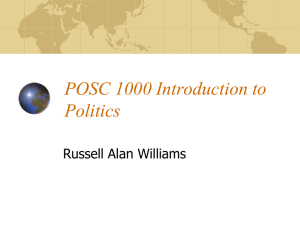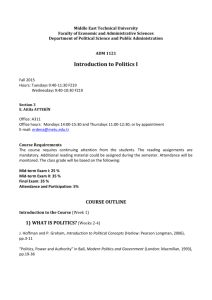Study Guide 1 - Los Medanos College
advertisement
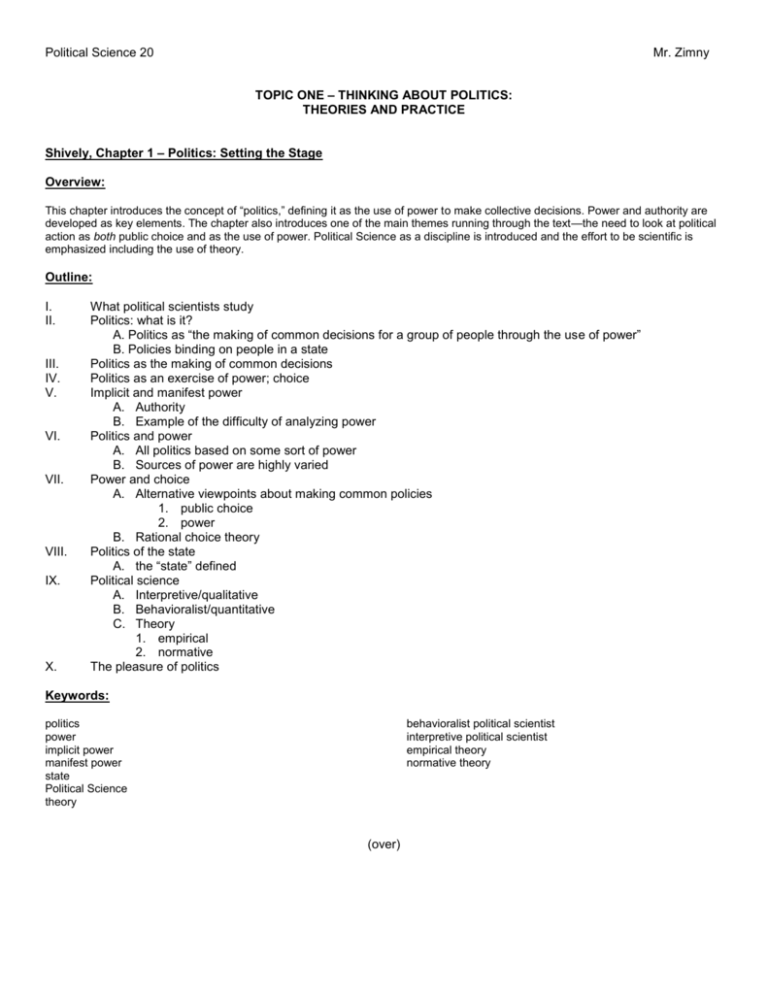
Political Science 20 Mr. Zimny TOPIC ONE – THINKING ABOUT POLITICS: THEORIES AND PRACTICE Shively, Chapter 1 – Politics: Setting the Stage Overview: This chapter introduces the concept of “politics,” defining it as the use of power to make collective decisions. Power and authority are developed as key elements. The chapter also introduces one of the main themes running through the text—the need to look at political action as both public choice and as the use of power. Political Science as a discipline is introduced and the effort to be scientific is emphasized including the use of theory. Outline: I. II. III. IV. V. VI. VII. VIII. IX. X. What political scientists study Politics: what is it? A. Politics as “the making of common decisions for a group of people through the use of power” B. Policies binding on people in a state Politics as the making of common decisions Politics as an exercise of power; choice Implicit and manifest power A. Authority B. Example of the difficulty of analyzing power Politics and power A. All politics based on some sort of power B. Sources of power are highly varied Power and choice A. Alternative viewpoints about making common policies 1. public choice 2. power B. Rational choice theory Politics of the state A. the “state” defined Political science A. Interpretive/qualitative B. Behavioralist/quantitative C. Theory 1. empirical 2. normative The pleasure of politics Keywords: politics power implicit power manifest power state Political Science theory behavioralist political scientist interpretive political scientist empirical theory normative theory (over) Shively, Chapter 2 – Modern Ideologies and Political Philosophy Overview: The realms of political thought or political philosophy are introduced with an emphasis on the major modern political ideologies (liberalism, conservatism, and socialism) and their main proponents (Locke, Burke, and Marx, respectively). The chapter also describes the American versions of liberalism and conservatism and explores how modern political ideologies continue to evolve and new ideologies emerge. This edition delves more deeply into the origins of both modern and classical political thinking. Ideologies serve many masters and the chapter discusses the uses and misuses of broad political philosophies. Outline: I. II. III. Ideologies A. Defined as organized sets of ideas B. Why they are useful C. Public and private uses of ideologies American ideologies A. American liberalism B. American conservatism C. Why there is an increase in concern about ideologies in the U.S. Liberalism A. B. IV. The Conservative reaction A. B. C. V. VI. VII. VIII. IX. One of three great European ideologies Box: John Stuart Mill and Liberalism Conservatism in the European sense is unfamiliar to Americans Box: Edmund Burke and Conservatism Adaptivity of Conservatism The socialist alternative A. Box: Karl Marx and Socialism Communism and socialism A. Post-1917 split in socialist movement 1. Communist Parties and Democratic Socialist Parties Fascism A. a style of politics rather than a coherent ideology Ideologies in the 21st Century A. Modifications of ideologies in light of practical experience B. Neoliberalism Political philosophy in other historical eras A. The Greeks (Plato, Aristotle) B. Early Christian writers (Saint Augustine, Saint Thomas Aquinas) C. Responses to the power of the Church (Niccolo Machiavelli) D. Protestantism (Martin Luther) E. Question of royal authority (Thomas Hobbes) F. Box: Analytical Political Philosophy Keywords: ideology American liberalism American conservatism liberalism conservatism socialism communism democratic socialism fascism neoliberalism class identity group

